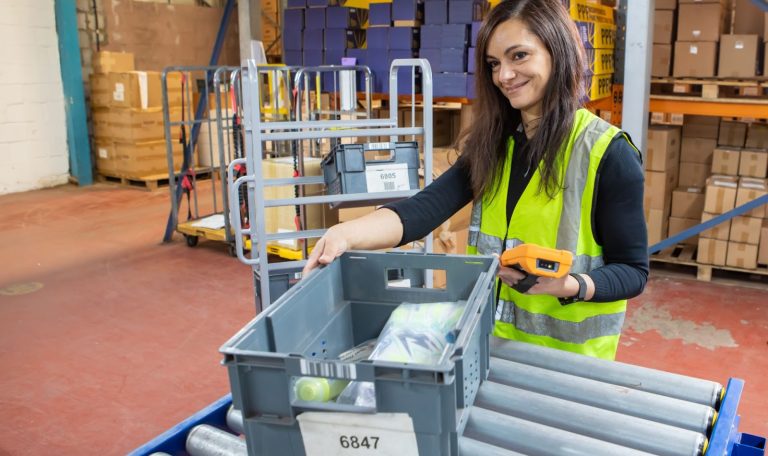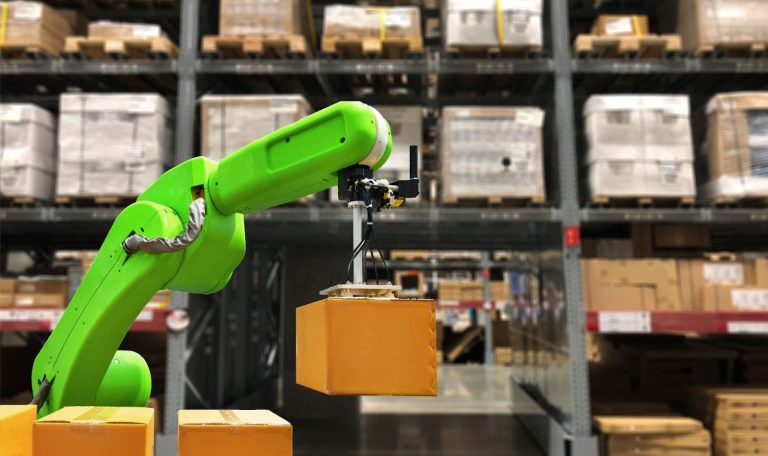Every eCommerce brand reaches a point where fulfilment becomes make-or-break. You might be handling it in-house right now, or working with a 3PL that’s not quite delivering. Either way, if you’re reading this, you’ve probably felt the pain of pick and pack mistakes.
The wrong item was shipped. A damaged package. An address label mix-up. Each mistake costs you more than the reshipping fee. It costs you customer trust, repeat orders, and hours of customer service time you could spend growing your business.
The good news is that most pick and pack mistakes follow predictable patterns. Fix these five critical errors, and you’ll cut your eCommerce fulfilment costs, reduce returns, and stop losing customers to avoidable mistakes.
Here’s what you need to know.
What Are Pick and Pack Mistakes?
Pick and pack mistakes happen at two distinct stages of fulfilment.
Picking means selecting the correct items from your inventory based on each order. A picking mistake occurs when the wrong product, wrong variant (size, colour), or wrong quantity leaves the shelf.
Packing means preparing those picked items for shipment. This includes choosing appropriate packaging materials, protecting fragile items, and applying the correct shipping label. Packing mistakes happen when the right product is packaged poorly, labelled incorrectly, or sent with the wrong carrier service.
Both picking and packing matter because eCommerce customers expect near-perfect accuracy. One wrong item can turn a loyal customer into a detractor who leaves a negative review. In a market where customers compare you to Amazon’s fulfilment standards, there’s little room for error.
The challenge grows as you scale. Selling across your own website, Amazon, eBay, and retail channels means more SKUs, more order sources, and more opportunities for mistakes. Each error creates a ripple effect: returns processing, customer service inquiries, inventory discrepancies, and potential negative reviews.
Mistake 1: Poor Inventory Accuracy From the Start
Most pick and pack mistakes don’t begin at the picking stage. They start earlier, during receiving and put-away.
Your warehouse management system shows 50 units in stock. Your picker goes to the location and finds 45. The order can’t be fulfilled accurately, so it’s delayed, or worse, the picker grabs the wrong item to meet dispatch deadlines.
Why This Happens
- Rushed receiving during busy periods without proper counting
- Manual data entry errors when logging stock into systems
- Items are stored in the wrong locations during put-away
- No regular cycle counting between annual stock takes
- Lack of barcode or RFID scanning at goods-in
The Real Cost
Poor inventory accuracy leads to stockouts on “available” items, overselling on your website, delayed orders, and emergency courier charges. You might lose sales entirely if customers go elsewhere after seeing “out of stock” on items your system says you have.
How to Fix It
- Implement barcode scanning at receiving: Scan each item as it arrives and verify quantities against purchase orders
- Run regular cycle counts: Count a portion of your inventory weekly rather than waiting for annual stock takes
- Use RF scanning technology: Radio frequency scanners help maintain real-time accuracy during put-away and picking
- Train receiving staff properly: Clear procedures and adequate time prevent rush-job mistakes
- Sync your systems in real time: Ensure your inventory management system updates immediately across all sales channels
Modern fulfilment operations aim for 99% inventory accuracy or higher. Even moving from 95% to 98% accuracy significantly reduces downstream picking errors.
Mistake 2: Wrong Items or Quantities Picked
This is the most visible pick and pack mistake. A customer orders a size M blue t-shirt and receives a size L in red. The result is immediate: return request, refund processing, reshipping cost, and one frustrated customer who might not order again.
Why Picking Errors Happen
- Similar products stored too close together (variants easily confused)
- Confusing SKU codes that look alike
- Picker fatigue during peak periods like Black Friday
- No verification system to confirm the right item was selected
- Poor lighting or unclear bin labels
- Pressure to pick faster reduces accuracy
The multi-channel element makes this worse. Different marketplaces often use different naming conventions or SKU systems, increasing confusion for pickers switching between order sources throughout the day.
The Cost of Getting It Wrong
Each wrong item typically costs £5-10 in reshipping expenses alone. Add return processing, customer service time, and the potential loss of that customer’s lifetime value. Some research suggests each fulfilment error reduces order profitability by around 13%.
A brand shipping 1,000 orders monthly with a 3% error rate faces 30 mistakes per month. At £8 average cost per error, that’s £240 monthly or £2,880 annually in direct costs, before counting lost customers.
How to Fix Picking Errors
Immediate improvements:
- Implement scan verification at pick (scan the barcode before placing in the tote)
- Create clear bin locations with large, readable labels
- Organise warehouse layout logically (separate similar-looking items)
- Add extra verification steps during peak periods
- Slow down pick rates if necessary to maintain accuracy
Technology solutions:
- Barcode scanning systems that prevent wrong picks
- Pick-to-light systems for high-volume operations
- Voice picking technology for hands-free verification
- Random quality control spot-checks
- 100% verification for new staff during training period
Implement multi-step verification: Pick verification (scan at pick), pack verification (packer checks items match packing slip), and final audit (random spot-checks before shipping)
Speed vs Accuracy
Many brands push for faster pick rates (picks per hour) to reduce labour costs. This can backfire badly. Consistent accuracy should come first. Once your team picks accurately, then you can work on speed improvements. The cost of fixing mistakes far exceeds the cost of taking an extra few seconds per pick.
Inefficient Picking Methods
The way you pick orders affects both speed and accuracy. Single-order picking (one order at a time) is accurate but slow. Batch picking (multiple orders simultaneously) is faster but increases the risk of mixing up items between orders.
Common picking methods:
- Single-order picking: Best for low volumes or complex orders, high accuracy
- Batch picking: Pick multiple orders at once, requires careful sorting to avoid mix-ups
- Zone picking: Different pickers handle different warehouse zones, items converge at packing
- Wave picking: Time-based picking batches (morning wave, afternoon wave)
Choose your picking strategy based on order volume, warehouse size, and product complexity. Batch picking works well for simple orders with proper verification, but avoid it entirely until your accuracy consistently exceeds 98%.
Staff Training Depth
Poorly trained staff make more mistakes, work slower, and feel less confident in their roles. Training shouldn’t stop after onboarding. Regular refresher sessions, updates on new products or procedures, and clear documentation all reduce errors.
Effective training includes:
- Product familiarisation (what items look similar, common variants)
- Hands-on practice with scanning equipment
- Clear SOPs available at each workstation
- Regular workshops on new procedures or seasonal products
- Performance feedback loops (acknowledge good accuracy, address persistent errors constructively)
- Cross-training on multiple stations to build understanding of the full process
Staff who understand why accuracy matters (customer satisfaction, cost of errors, brand reputation) typically perform better than those simply told to “work faster.”

Mistake 3: Inadequate or Incorrect Packaging
You picked the right product. Your picker scanned correctly. Then it arrives at your customer’s door damaged, in a box three times too large, or wrapped in excessive plastic when they expected eco-friendly materials.
Packaging mistakes hurt your brand in ways that picking errors don’t. The unboxing experience shapes how customers perceive your business. Poor packaging suggests you don’t care about their experience or your products.
Common Packaging Mistakes
Protection problems:
- Insufficient cushioning for fragile items
- Heavy items placed in weak boxes
- Cosmetics shipped without padding
- Glass or ceramic products inadequately wrapped
Wrong sizing:
- Oversized boxes that waste materials and increase shipping costs (dimensional weight charges from carriers)
- Too much packaging material: Excessive void fill increases costs and frustrates eco-conscious customers who expect minimal waste
- Boxes are too small, forcing packers to cram items in
- Underpacking fragile items: Insufficient cushioning causes transit damage and returns
- Inconsistent box sizes are creating packing station confusion
- No standardisation: Every packer chooses different box sizes for the same products, leading to inefficiency and variable costs
Brand experience failures:
- Missing custom packaging elements (branded boxes, tissue paper, thank-you notes)
- Wrong marketing inserts or promotional materials
- Generic packaging when customers expect premium presentation
- Excessive plastic void fill when your brand promotes sustainability
Cost implications:
- Dimensional weight surcharges from carriers (oversized packaging)
- Product damage claims and return shipping costs
- Customer disappointment leading to negative reviews
- Waste of packaging materials and staff time
How to Fix Packaging Mistakes
- Standardise your packaging: Create a clear guide showing which box size fits which product categories
- Create packing SOPs: Standard operating procedures with photos showing proper cushioning techniques
- Train your packing team: Regular refreshers on fragile item handling and brand-specific requirements
- Use right-sized boxes: Invest in a range of box sizes or adjustable packaging
- Set quality control checkpoints: Spot-check high-value or fragile items before they ship
- Consider sustainability: Use recyclable materials and minimal void fill to align with customer expectations
- Document custom requirements clearly: If you offer branded unboxing experiences, create visual guides for packing stations
Packaging Mistakes During Peak Periods
Black Friday, Cyber Monday, and the Christmas rush create perfect conditions for packaging errors. Temporary staff, long shifts, and pressure to dispatch quickly all reduce packing quality.
Peak period solutions:
- Add extra quality control staff during busy weeks
- Pre-pack your most common items in advance
- Place clear visual guides at every packing station
- Accept slightly slower packing to maintain standards
- Brief the temporary staff thoroughly before they start in the peak season
Mistake 4: Mis-Labelling and Shipping Errors
You picked correctly. You packed well. Then the order goes to the wrong address, or sits at a depot because customs documentation is missing, or arrives three days late because you printed a standard label instead of next-day.
Shipping and labelling errors undermine all your earlier work. The right product in perfect packaging is useless if it doesn’t reach your customer on time.
Types of Labelling Mistakes
Address errors:
- Typos or incomplete addresses (especially international orders)
- Missing flat or apartment numbers
- Incorrect postcodes
- Multiple orders to the same household with mixed-up labels
Service level mistakes:
- Next-day label on a standard shipment (customer expects faster delivery)
- Standard label when the customer paid for express
- The wrong carrier was selected for the destination
Weight and dimension errors:
- Incorrect package weight is causing carrier rejection
- Wrong dimensions triggering dimensional weight surcharges
- Carrier penalties for repeated inaccuracies
International shipping problems:
- Missing customs documentation (CN22/CN23 forms)
- Incorrect harmonised codes for customs
- Missing commercial invoices for high-value items
- Inadequate description of contents
The Cost of Label Mistakes
Lost packages, delivery delays, customer service inquiries, re-shipping costs, and carrier penalties all add up. International label errors can mean packages stuck in customs for weeks, leading to refund requests and lost sales opportunities.
How to Fix Labelling Errors
System integration:
- Connect your order management system directly to carrier systems
- Auto-generate labels to eliminate manual entry errors
- Use address validation software that catches incomplete or incorrect addresses before printing
Verification processes:
- Scan the order barcode, scan the label barcode, and verify they match before applying
- Create clear packing station procedures (label placement, order number verification)
- Implement final checks before items leave the packing area
International shipping:
- Pre-populate customs forms in your system
- Maintain a harmonised code database for your products
- Train staff on carrier-specific international requirements
- Use a 3PL with EU or US fulfilment centres to avoid complex customs (stock in-region for local delivery)
Regular audits:
- Track misshipped orders weekly
- Identify patterns (specific staff members, times of day, product types)
- Address root causes through targeted training
Mistake 5: No Clear Process for Handling Returns
Order returns expose every pick and pack mistake you’ve made. They also create new mistakes if you don’t handle them systematically.
eCommerce return rates run at 20-30% for fashion and apparel. January often sees return volumes double after Christmas. Poor returns processing turns one mistake into multiple problems.
Common Returns Processing Mistakes
- Returns sitting in a “to be processed” area for days or weeks
- No clear criteria for what’s resaleable vs damaged vs disposable
- Returned items were not logged back into inventory promptly
- System shows items out of stock when returned units exist in the warehouse
- Customer refunded before item is inspected (fraud risk)
- “Wrong item sent” returns are not investigated for root cause analysis
The Cost of Poor Returns Handling
Inventory shrinkage, delayed refunds, frustrating customers, missed sales opportunities (returned stock unavailable for new orders), and worst of all,the inability to identify and fix recurring pick and pack problems.
Each return that sits unprocessed is revenue sitting idle. Stock you paid for, that could be sold again, is effectively frozen.
How to Fix Returns Processing
Create a dedicated returns workflow:
- Separate the returns area from outbound fulfilment
- Same-day or next-day processing targets
- Clear inspection criteria and staff training (what’s resaleable)
- Immediate system updates when returns are logged
- Fast refund or exchange processing (within 48 hours of receipt)
Use returns data for improvement:
- Track return reasons systematically (wrong item sent, damaged in transit, product issue, changed mind)
- Identify patterns: Are specific products frequently returned due to picking errors?
- Is packaging causing transit damage?
- Are product descriptions mismatched with what customers receive?
- Monthly reports on return reasons to drive fulfilment improvements
Consider returns a feedback loop: Returns data tells you where your pick and pack process is failing. A spike in “wrong item sent” returns points to picking accuracy problems. Multiple “damaged in transit” returns for the same product indicate inadequate packaging.
Many 3PLs offer returns management as part of their service, with established inspection processes, quick restocking, and detailed reporting that helps you improve operations over time.

How to Measure Your Pick and Pack Accuracy
You can’t improve what you don’t measure. Track these key metrics to understand your fulfilment performance:
Order accuracy rate: Percentage of orders shipped correctly first time
- Industry benchmark: Aim for 99% or higher
- Modern 3PLs typically achieve 99.5%+ accuracy
Pick accuracy rate: Percentage of individual items picked correctly
- Track this separately from order accuracy
- Helps identify if errors happen at pick or pack stage
Return rate and reasons: What percentage of orders come back, and why
- Separate controllable returns (your mistakes) from uncontrollable (customer changed mind)
- Track trends over time
Cost per error: Average cost to fix each mistake
- Include reshipping, return processing, customer service time
- Helps justify investments in accuracy improvements
Time to dispatch:Hours from order received to shipped
- eCommerce customers expect same-day dispatch for orders placed before cut-off
- Slow processing leads to missed delivery promises and cancellations
- Balance accuracy with reasonable speed (99% accuracy at 24-hour dispatch beats 95% accuracy at 2-hour dispatch)
- Identify bottlenecks: Is receiving slow? Picking? Packing? Carrier collection?
- Track processing times by time of day to identify when errors increase
Setting Realistic Benchmarks
Small operations handling fulfilment in-house might start at 95-97% accuracy. Modern 3PLs typically achieve 99%+ through established processes and technology.
The improvement from 97% to 99% accuracy halves your error rate. At 1,000 orders monthly, that’s 30 mistakes per month reduced to 10, saving you roughly £160 in direct costs monthly, not counting the indirect benefits of happier customers.
Continuous Improvement Approach
- Run regular accuracy audits: Weekly or monthly spot-checks
- Conduct root cause analysis: Was it training? Layout? System? Staff fatigue?
- Create feedback loops: Pickers and packers often know what’s causing problems, ask them
- Make incremental changes: Don’t try to fix everything at once
- Invest in technology strategically: Start with barcode scanners before considering robotics
When error rates remain stubbornly high despite improvement efforts, or fulfilment is taking management focus away from product development and marketing, it might be time to consider outsourcing to a tech-enabled 3PL.
Calculating the Cost of Errors
Here’s what these mistakes actually cost you:
Direct costs:
- Reshipping: £5-10+ per order
- Return processing: staff time, inspection, restocking labour
- Replacement inventory (if original is damaged or lost)
- Carrier surcharges for dimensional weight or address corrections
- Customer service time handling complaints
Indirect costs:
- Lost lifetime value of customers who don’t return after a bad experience
- Negative reviews impacting conversion rates (one bad review can deter dozens of potential customers)
- Brand damage, especially for premium or eco-focused brands
- Staff morale (dealing with constant errors is demoralising for your team)
- Management time spent firefighting instead of growing the business
Example calculation: A brand shipping 1,000 orders monthly with a 3% error rate faces 30 mistakes per month. At £8 average cost per error (conservative estimate), that’s £240 monthly or £2,880 annually in direct costs alone, before counting lost customers and brand damage.
Reducing that error rate to 1% saves nearly £2,000 annually while improving customer satisfaction and repeat purchase rates.
Next Steps for Better Accuracy
Pick and pack mistakes are common, costly, and fixable. The five mistakes covered here (poor inventory accuracy, wrong picks, inadequate packaging, mislabelling, and poor returns handling) have the biggest impact on eCommerce brands.
Start by auditing your current fulfilment process against these five areas. Identify your biggest vulnerability and address it first. Small improvements compound quickly.
As you scale, maintaining accuracy becomes harder without proper systems, trained staff, and robust processes. Many growing brands reach a point where outsourcing to a specialist 3PL makes business sense. Look for partners with proven accuracy rates above 99%, clear documented processes, real-time inventory systems, and technology that integrates with your sales channels.
The right fulfilment partner (in-house or outsourced) frees you to focus on what you do best: developing products, building your brand, and growing your customer base.
FAQs About Picking and Packing Mistakes
What is the difference between picking and packing?
Picking is selecting the correct items from inventory based on customer orders, while packing is preparing those items for shipment with appropriate materials, protection, and shipping labels. Picking errors mean wrong products leave the shelf; packing mistakes mean right products are poorly presented or protected.
What causes most pick and pack mistakes in eCommerce?
The main causes are poor inventory accuracy, similar products stored too close together, insufficient staff training, and lack of verification systems like barcode scanning. Mistakes increase during peak periods when staff are rushed or tired.
How much do pick and pack errors cost eCommerce businesses?
Each error typically costs £5-10 in direct reshipping expenses, but the total impact is higher when including customer service time and lost customers. A brand shipping 1,000 orders monthly with a 3% error rate faces roughly £2,880 in annual direct costs alone.
What is a good accuracy rate for order fulfilment?
Modern eCommerce fulfilment should aim for 99% accuracy or higher. Many established 3PLs achieve 99.5%+ accuracy through barcode scanning and quality control, while small businesses typically reach 95-97% with good processes.
When should I outsource pick and pack to a 3PL?
Consider outsourcing when error rates stay high despite improvements, when fulfilment distracts from core business activities, or when expanding into new channels. Many brands switch to a 3PL around 500+ orders monthly.
How can I reduce packaging mistakes in my fulfilment process?
Standardise packaging materials, create visual guides for your packing team, and use right-sized boxes for different products. Regular staff training and quality control spot-checks during busy periods also help maintain consistency.




